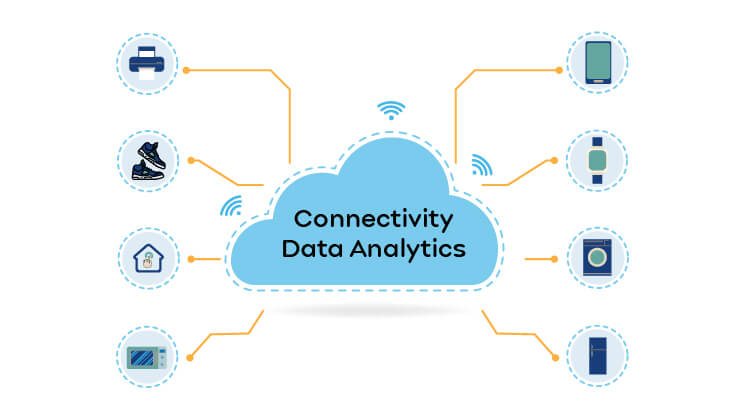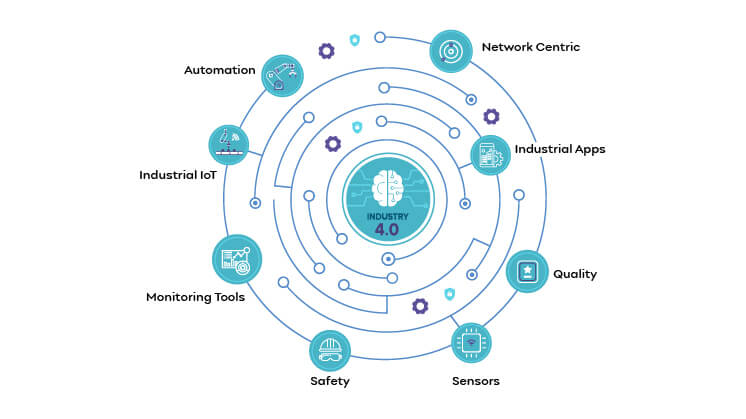The Internet of Things (IoT) is one of the top mobile app development trends that has rapidly transformed the way we interact with the world around us. IoT has enabled seamless communication and automated control by connecting physical devices to digital interfaces.
From smart homes to industrial automation, the applications of IoT are far-reaching and diverse. In this article, we’ll delve into the top 10 applications of IoT in 2023, showcasing how this technology is shaping various sectors and enhancing our everyday lives.
What is the Internet of Things (IoT)?
The Internet of Things, commonly called IoT, has quickly woven itself into the fabric of our everyday existence. Even those less inclined towards technology have utilized its convenience, comfort, and invaluable insights.
IoT has seamlessly integrated into our lives, evident through our connected home devices, intelligent thermostats, remotely controlled door locks, and many app-controlled gadgets we rely on.
The significance of IoT isn’t confined to personal use; its influence extends to industrial applications and broader social contexts. Its transformative power enhances our lives in ways we might not have even realized were possible.
IoT addresses our challenges and has an uncanny knack for solving problems we haven’t yet identified. When we think of IoT, we envision ordinary objects transformed into connected entities, allowing us to manage these “things” through our smartphones or computers while accessing the wealth of data they provide.

1- Smart Agriculture:
IoT is making significant strides in agriculture, boosting productivity and sustainability. By deploying IoT devices, farmers can monitor micro-climate conditions in indoor and outdoor planting, optimize irrigation and fertilizer systems, and ensure efficient resource utilization.
Sensors collect data on soil moisture, weather conditions, and nutrient levels, enabling precise control over cultivation processes.
???? Did you know?
This technology-led approach can increase crop yields by up to 15%, minimizing resource wastage and maximizing sustainability.
2- Consumer IoT:
Wearable IoT devices like smartwatches and health monitors empower individuals to track their exercise progress and overall health. Meanwhile, smart homes are making life more convenient by managing environmental controls and remotely controlling appliances and security systems.
From starting dinner remotely to ensuring optimal home comfort, consumer IoT devices are becoming integral to modern living.

3- Healthcare Revolution:
IoT is transforming healthcare by enabling remote monitoring of patients’ health, reducing hospital stays, and providing real-time information to medical professionals.
Wearable IoT devices allow hospitals to track patients’ well-being at home, potentially saving lives through timely interventions. IoT sensors on critical equipment also prevent breakdowns and ensure reliable medical services. Integrating a healthcare CRM can further enhance these capabilities by managing patient interactions and data effectively.
The global healthcare IoT market is projected to reach $534.3 billion by 2025.
4- Innovative Insurance Solutions:
Even the insurance industry leverages IoT for personalized services. Insurers offer discounts on premiums for customers using IoT wearables like fitness trackers. Insurers create a win-win situation that benefits policyholders and the industry by monitoring customers’ health and incentivizing healthier habits.
By 2025, insurers expect to leverage IoT data to reduce fraud, saving up to $4.5 billion annually.
5- IoT in Manufacturing:
IoT is revolutionizing manufacturing by providing end-to-end visibility in the supply chain. RFID and GPS technologies track products from production to distribution, optimizing logistics and reducing waste.
IoT sensors on factory equipment identify bottlenecks and predict maintenance needs, minimizing downtime and maximizing production efficiency.
The industrial IoT market is predicted to reach $263.4 billion by 2026.

6- Retail Transformation:
IoT is reshaping the retail sector by enabling businesses to analyze customer behavior and tailor personalized promotions. Retailers can optimize inventory management and automate warehouse operations using IoT sensors and RFIDs.
Mall traffic analysis helps improve the shopping experience, while location-based promotions sent to customers’ smartphones increase engagement.
The data-driven engagement strategy will boost in-store sales by 59% by 2025.
7- Transportation Evolution:
IoT’s impact on transportation ranges from self-driving cars to optimizing delivery routes. GPS technology helps transportation companies plan efficient routes, reducing delivery times.
Data from IoT sensors assists city planners in understanding traffic patterns, parking demand, and road maintenance needs.
Did you know? IoT’s insights could reduce commute times by up to 15%, mitigating congestion and environmental impact.
8- Efficient Utilities and Energy Management:
IoT sensors drive energy efficiency by monitoring environmental conditions and adjusting energy usage accordingly. Businesses and homes can achieve substantial energy savings through automated environmental controls.
Additionally, IoT data enhances municipal power grid management, leading to faster outage response and reduced blackout durations.
IoT can reduce energy consumption in homes and businesses by 10-15% by monitoring energy usage in real time.
9- Wearables Personalized Experiences:
Wearables like fitness bands and smartwatches have become indispensable companions, offering real-time health monitoring and personalized insights.
IoT-driven wearables provide data on calorie expenditure, heart rate, blood oxygen levels, and more, enabling users to take control of their well-being.
Wearable shipments surpassed 100 million units in 2021, a testament to the growing integration of IoT into our lives.
10- Smart Traffic Monitoring:
IoT is pivotal in creating smart cities by facilitating efficient traffic management. Utilizing mobile phones as sensors, apps like Google Maps and Waze provide real-time traffic data and alternate route suggestions.
By analyzing traffic patterns, commuters can make informed decisions and contribute to congestion reduction.
IoT-powered traffic management can decrease travel times by a remarkable 25% during peak hours.

Conclusion:
The Internet of Things has transitioned from a futuristic concept to an integral part of our lives, fundamentally changing how we interact with our surroundings. IoT’s impact is pervasive and transformative from the fields to our homes, roads, and factories.
In the rapidly expanding landscape of the Internet of Things (IoT), the role of mobile app development has become increasingly paramount. IoT extends its reach across various industries, and creating intuitive and robust mobile applications is essential.
As IoT continues to evolve, it’s clear that our world is becoming more interconnected, efficient, and adaptable than ever before.
Frequently Asked Questions
What is the Internet of Things, and how does it connect to mobile apps?
The Internet of Things (IoT) is a network of interconnected devices that share data and communicate over the Internet. Mobile apps are key factors in (IoT) work as user interfaces for remotely controlling and managing these devices.
What are some of the most popular IoT mobile apps on the market?
There are many famous IoT mobile apps. Such as Philips Hue (for smart lighting), Nest (for smart thermostats), and Samsung SmartThings (for home automation).
Can a single mobile app control several IoT devices?
Many IoT smartphone apps are intended to provide centralized control over several devices. This simplifies the user experience by allowing you to manage several smart devices from a single app.
Can IoT mobile apps run on multiple device platforms?
Yes, many IoT mobile apps are designed to work across platforms. They are frequently accessible for iOS and Android devices, enabling users to monitor and control their IoT devices.
In what ways does 5G technology improve the Internet of Things (IoT)?
5G technology enhances (IoT) capabilities by enabling higher data speeds, lower latency, and the simultaneous connection of a greater number of devices.
